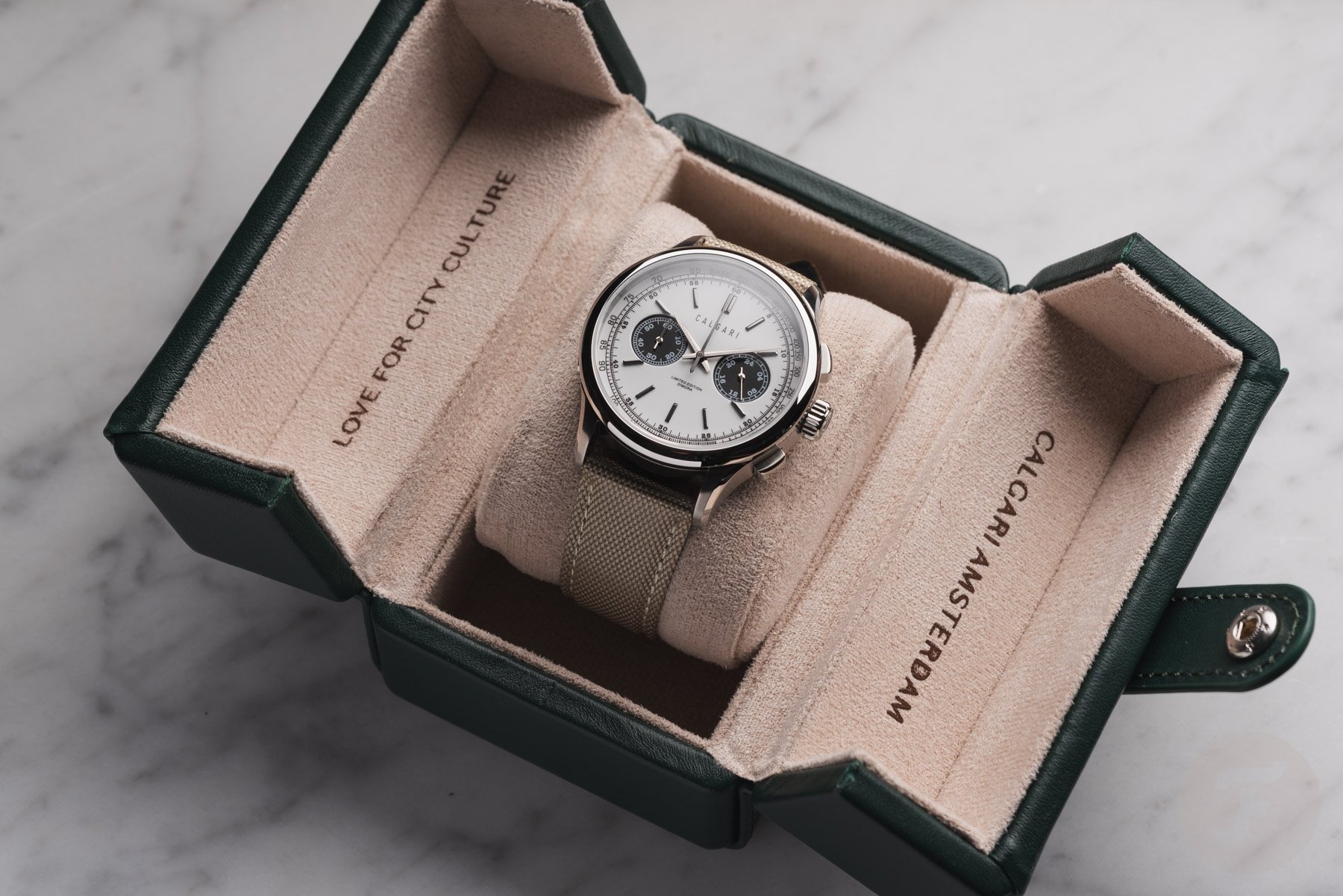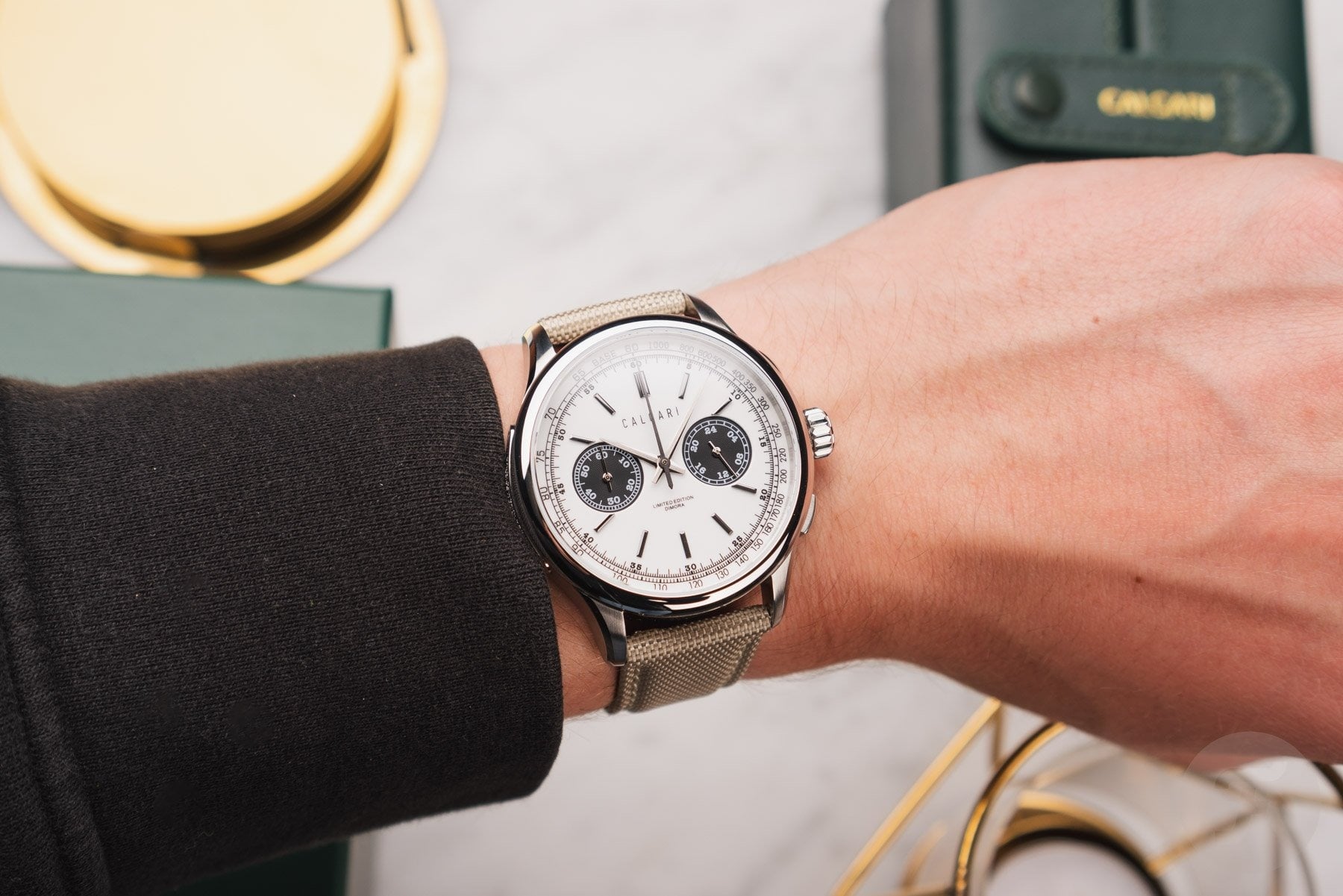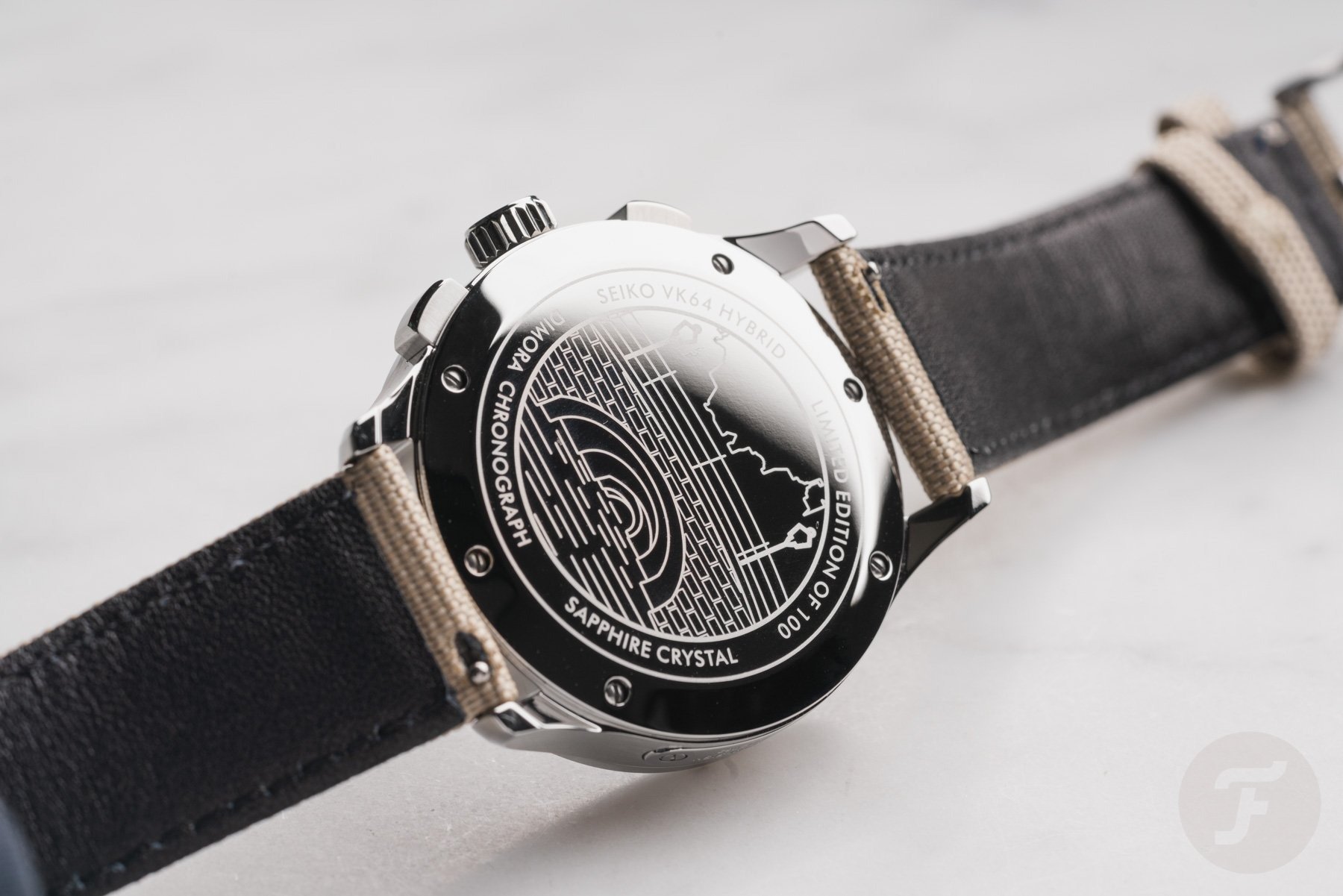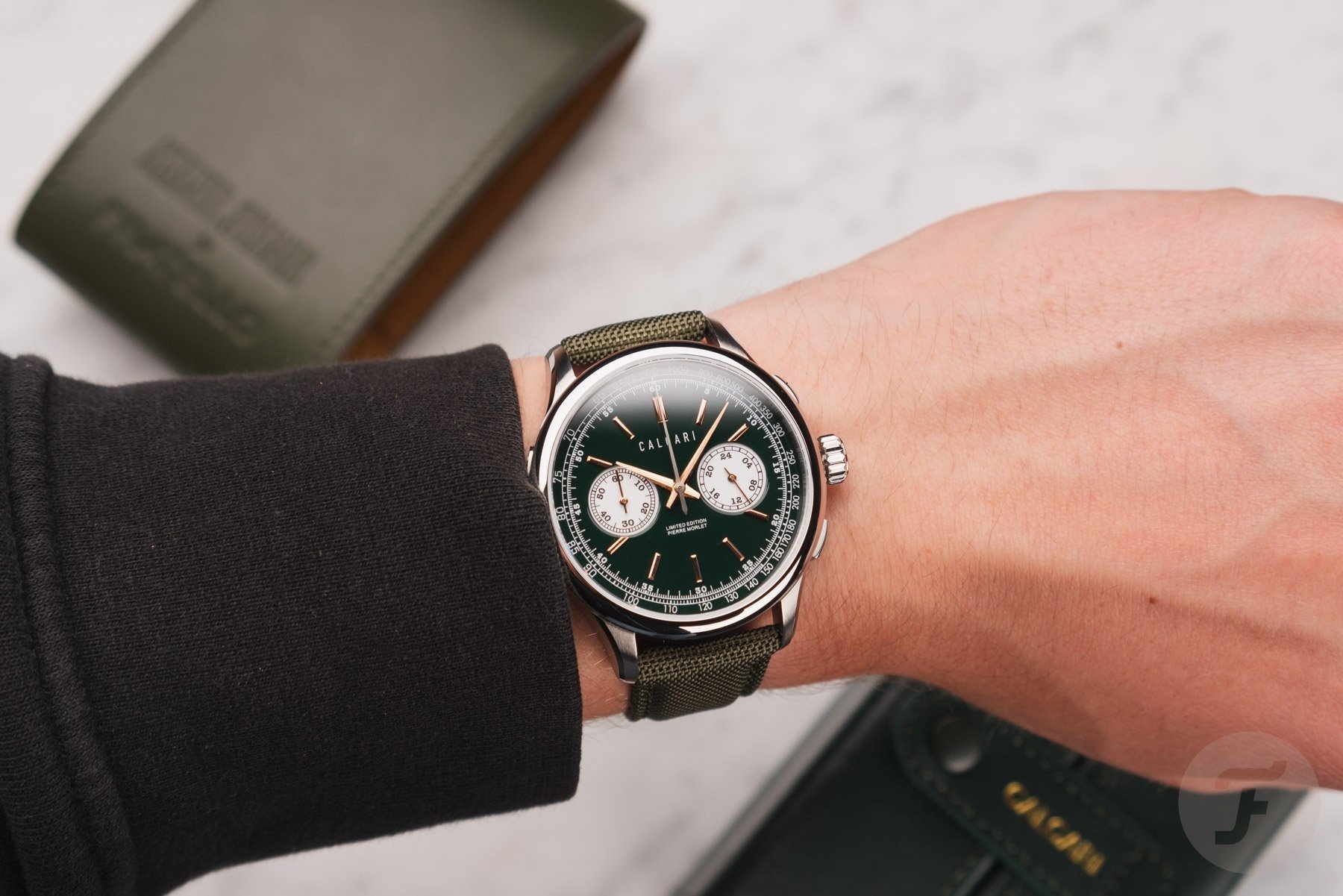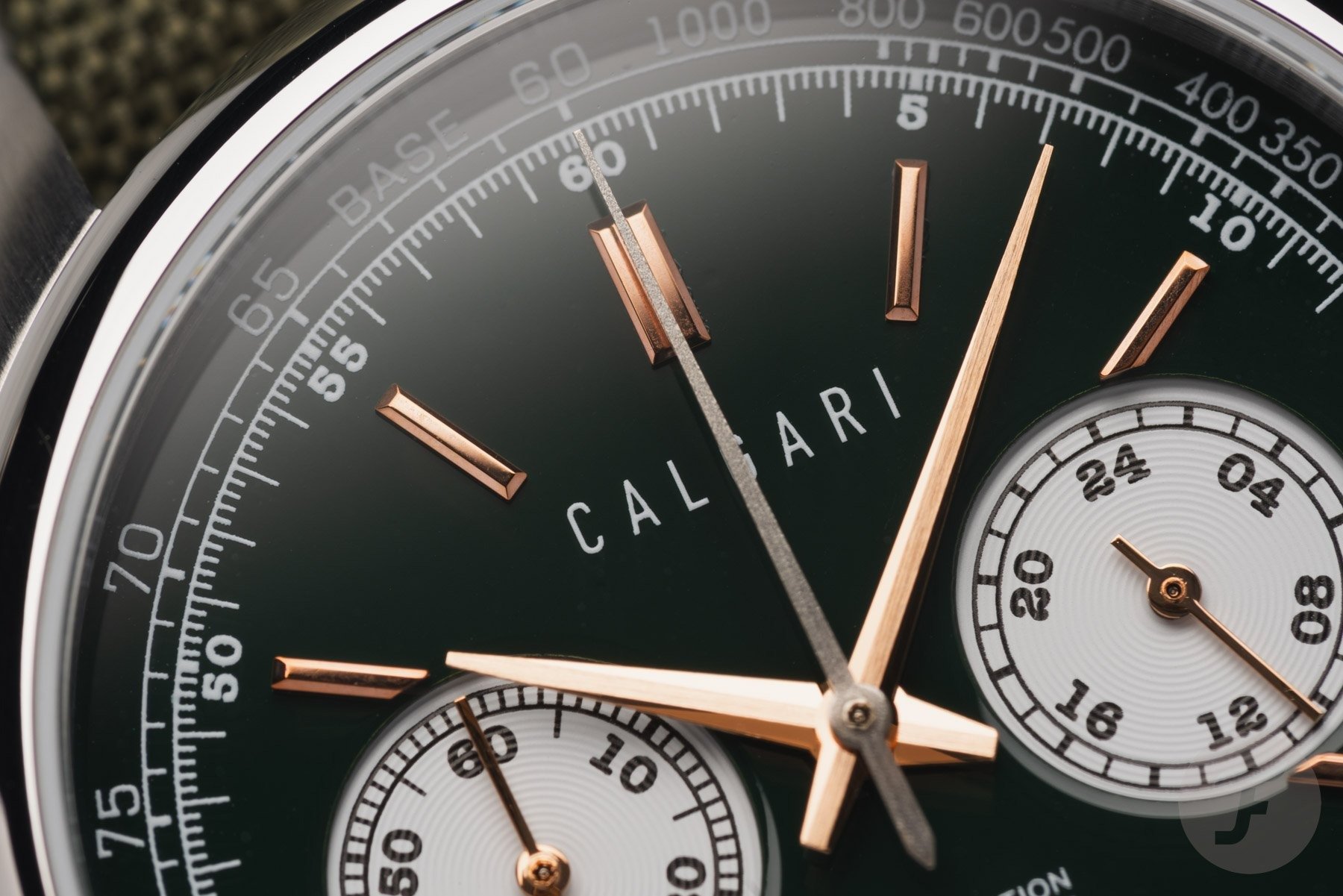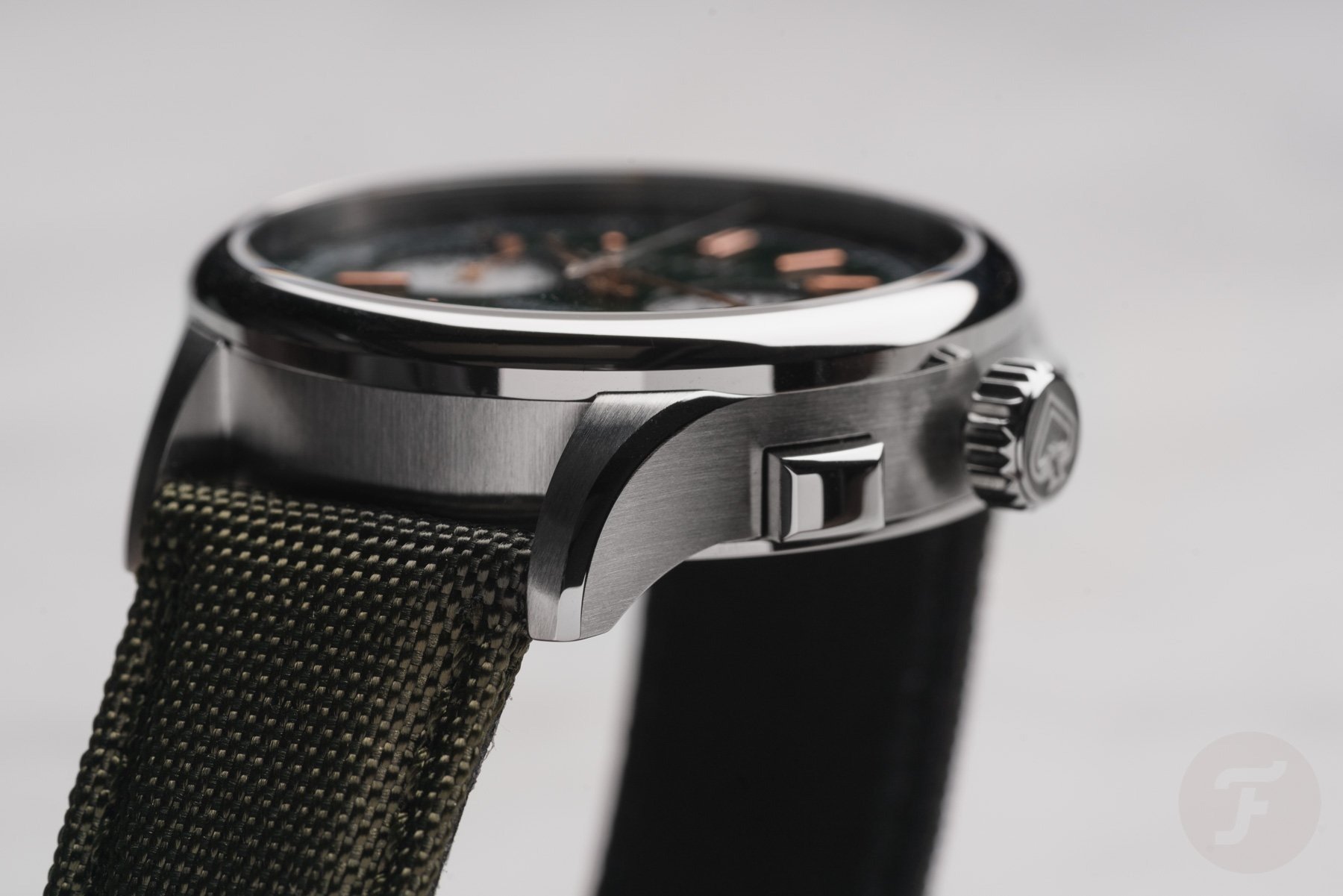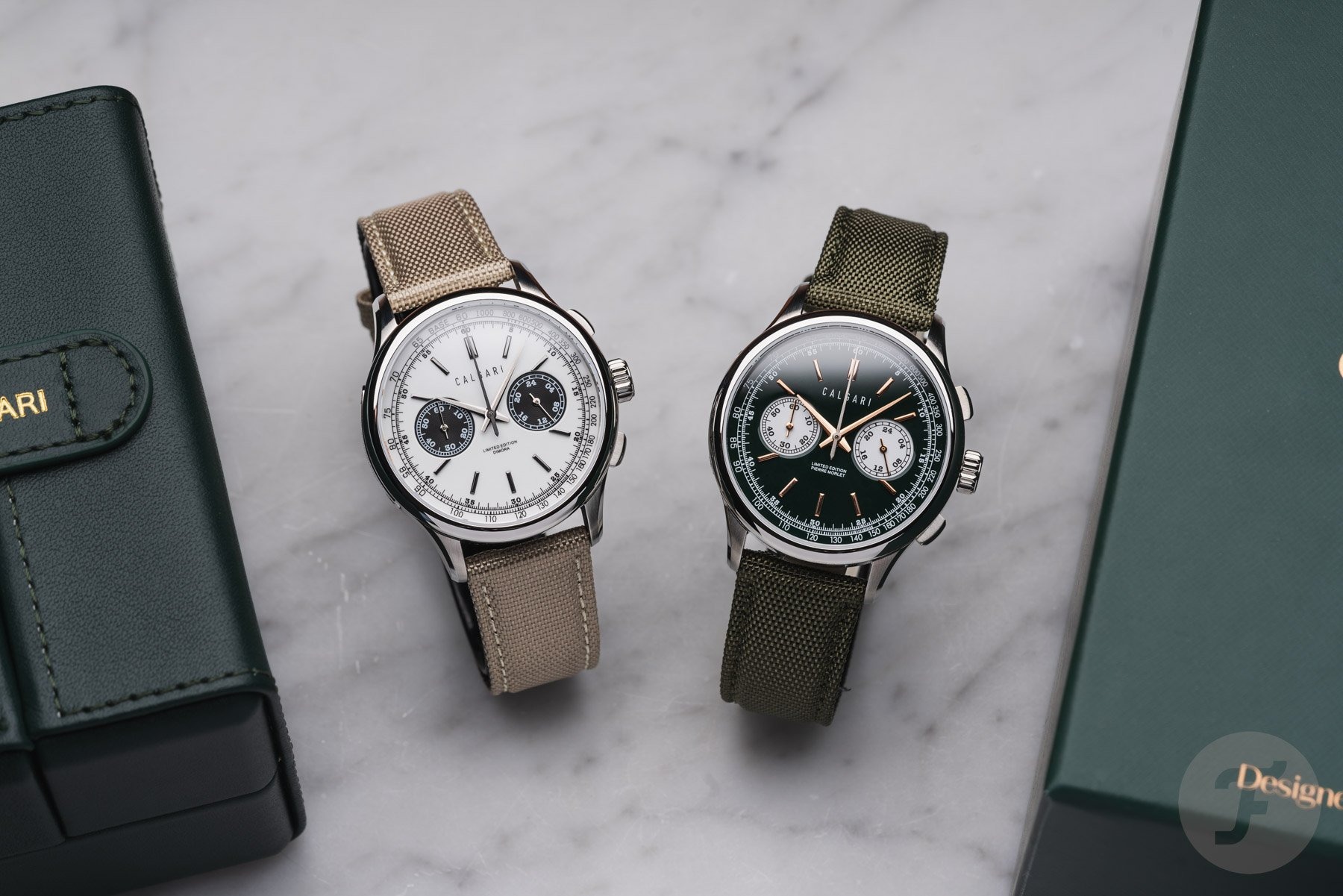Hands-On With The Calgari Dimora Panda And Pierre Morlet — Two Affordable Meca-Quartz Chronographs
It’s always exciting to discover a new watch brand, even more so when it was founded in your hometown. As we’re practically neighbors, I sat down for lunch with Vincent Bakker, one of the three founders of Calgari, to learn more about this Amsterdam-based brand and its watches. The adventure started by selling off-the-shelf watches, but soon, the founders wanted to develop designs of their own. That’s how their first collection of meca-quartz chronographs came about. I went hands-on with two of them — the Dimora Panda and Pierre Morlet.
As we sat down, Vincent told me this all started as a fun project between three friends. He and his friends Tim and Thijs had always wanted to start a company. They also all happened to be watch enthusiasts with a strong connection to fashion and design. The three friends felt there was a gap between the very affordable side of the market and the more luxurious one. That’s why, in 2019, they decided to start a watch brand to help fill that gap. The ultimate goal is to develop attractive watches with the allure of more expensive ones at a price that is accessible to a large group of people. Let’s see what a watch like that looks like in person.
With love for the Amsterdam city culture
Vincent brought out two of the three models currently available on their website. The watches come in elegant green boxes with a smaller leather box inside. The lining of the leather box says “love for city culture,” similar to the way Furlan Marri states the words “attractive wristwatches” on its boxes. Each watch comes with an owner’s manual completely in Amsterdam style with pictures of the city by Dutch photographer Tim Buiting. I first opened the box of the Dimora Panda version, with, as the name already indicates, a white and black panda dial. According to Vincent, the pure white dial reminds him and his co-founders of the clouds hanging above the city most days.
The Calgari Dimora Panda meca-quartz chronograph
The Calgari Dimora Panda is a 40mm meca-quartz chronograph with a brushed and polished stainless steel case. Including the slightly protruding flat sapphire crystal, it’s 11.6mm thick. To conclude its dimensions, it spans 47mm from lug to lug. Those brushed lugs feature an elegant polished bevel, and they quickly slope down toward the wrist. The convex bezel is fully polished, while the sides of the case are horizontally brushed. On the left side of the case, there’s a badge stating the watch’s unique number (out of 100 pieces), and on the right side, you’ll find the push-pull crown and chronograph pushers. When you turn the watch around, you’ll find a nice engraving inspired by the countless bridges over Amsterdam’s idyllic canals.
The Dimora’s glossy white dial features two black, recessed, and concentric-grained sub-dials at 3 and 9 o’clock. One serves as a 24-hour indicator (linked to the main hands), while the other is a 60-minute counter for the chronograph. The slender and applied stick markers are polished and beveled. It also looks like they received some kind of coating to make them darker. The diamond-cut hour and minute hands are brushed and feature thin, polished bevels. The central chronograph hand looks like it has been sandblasted. On the edge of the dial, you’ll find the tachymeter and the minute track. Finally, at its center, there’s the brand’s and the model’s name.
The Calgari Pierre Morlet meca-quartz chronograph
In addition to the more conventional Dimora Panda, I also got the chance to go hands-on with the more distinguished Pierre Morlet edition. In essence, it’s the same watch. However, this version has a glossy green dial and rose-tone indexes and hands. Also, the sub-dials are now white, which enhances the reverse panda look. The inspiration for this design came from a collaboration with champagne manufacturer Pierre Morlet, hence the name of the model. The color resembles the green hues of the family’s hillside vineyards. You can also find an artistic representation of those vineyards engraved on the case back. In addition to the two models I handled, there’s also a version with a black inverted panda dial, fittingly dubbed Nero Inv. Panda.
Quartz with a sweeping chrono hand
Underneath the decorated case back is the reliable VK64 meca-quartz chronograph movement from Seiko. This caliber powers tons of other affordable chronographs. It keeps the price of watches like these down, and the sweeping chronograph hand makes you think that you’re dealing with a mechanical movement. That’s also exactly why Vincent and his friends chose to put this movement inside their watches. In terms of accuracy, it runs between ±20 seconds a month, and you’ll have to change its battery roughly every three years.
So, apart from its affordability, it’s also a rather carefree movement to have inside your watch. It’s also nice to know that it’s fairly resistant to magnetic fields. That combined with the watch’s 50m water resistance makes this a good choice for daily wear for most people. Speaking of “wearing,” what are these watches actually like on the wrist?
On the wrist
Well, when I saw these watches sitting in their boxes, I did find that they looked a little thicker than I expected. However, that’s not something I experienced when wearing them. That’s mainly helped by the fairly short lug-to-lug distance and the way the lugs quickly curve down toward the wrist. The brushing and polishing are well done for a watch at this price point, and I feel the same about the layout of the dial design. The hands, sub-dials, indexes, and printing are all proportioned well and in harmony with each other. That said, I think Thomas will get a bit itchy because of the use of several different fonts.
I did have to get used to the fact that there’s no running seconds hand. In combination with the fact that it’s hard to hear the movement ticking very clearly (other than when the chronograph hand is moving), it’s sometimes hard to know whether the watch is running or not. Oh well; I guess that’s something you’ll get used to if you wear a meca-quartz-powered watch more regularly.
Both these watches come on matching sailcloth straps with a soft black leather lining and quick-release spring bars. They’re a bit stiff at first, but I guess they will become better over time. Or you could simply pre-shape them a bit by putting the watch on a stiffer cushion when you’re not wearing it. That’s exactly how I do it with my Jaeger-LeCoultre Reverso on the Casa Fagliano strap. By the way, that’s a strap that sells for almost as much as each of these Calgari watches.
Final thoughts
That’s exactly why I’m so excited about the Calgari Dimero Panda and Pierre Morlet. For €469.95 each, I think you’re getting a very decent watch with an attractive vintage-inspired design. Yes, the case could be a bit sleeker, and the dial could use a little more personality. But those are things that can be incorporated into the brand’s future models. The current Calgari offerings are a nice base to build on, and I’m excited to see what else we’ll see from these three Dutch friends from Amsterdam in the future.
The three models Calgari currently offers are available on the brand’s website and at the About Lifestyle store in Amsterdam. All three versions are limited to 100 pieces. For more information, check out the official Calgari website.
What do you think of the Calgari Dimero Panda and the Pierre Morlet, and what’s your experience with meca-quartz-powered watches? Let me know in the comments below.

